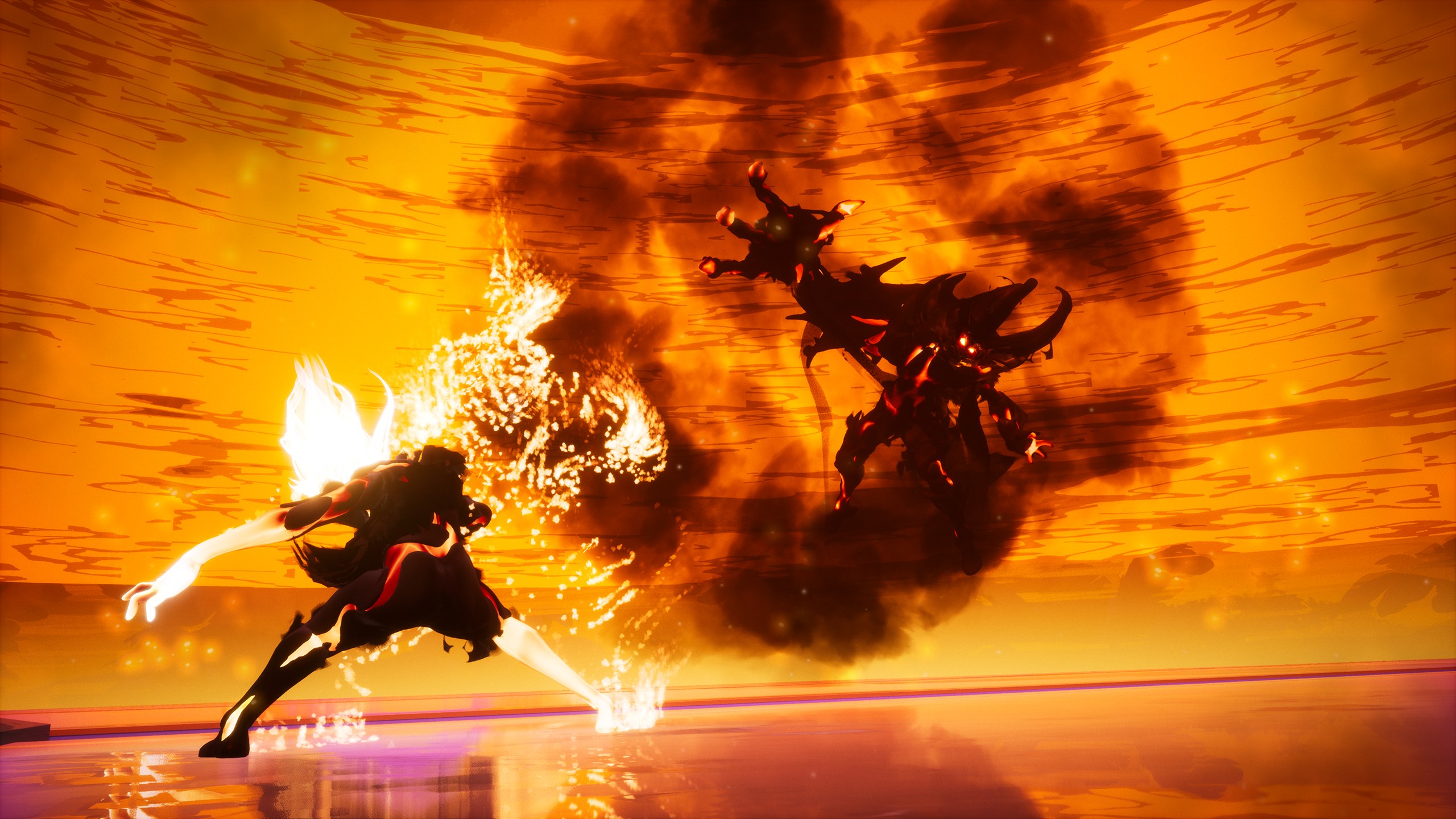
Strayed Lights will not change the world. It is not a revolutionary game that will reach into the minds and hearts of gamers everywhere and force a shift in perspective, a twisting of worldviews, or a coloring of emotions. It doesn't innovate with ambitious technologies or set new standards other games can only hope to reach. It's the debut title from a new indie studio, encapsulating everything that means.
Looking past the video game, though, I found something beautiful in Strayed Lights. It vacates the space in which a narrative should be and, in that void, leaves room for its players to paint their own picture; it uses its vibrant yet somber visuals, riveting soundtrack, and the tense world to bind you to the screen, and then gives you simple, yet addictive combat mechanics so that you have a challenge to overcome.
I loved Strayed Lights and the journey of emotional discovery I saw in it. It proved to me once again that, should you ever find yourself weary of the formulaic AAA games that dominate headlines and soak up profits, indie games are still lush in unceasing creativity and deserve your attention.
Disclaimer: This editorial was made possible by a game code provided by Embers. The company did not see the contents of the article before publishing.
Sights and sounds to capture your senses
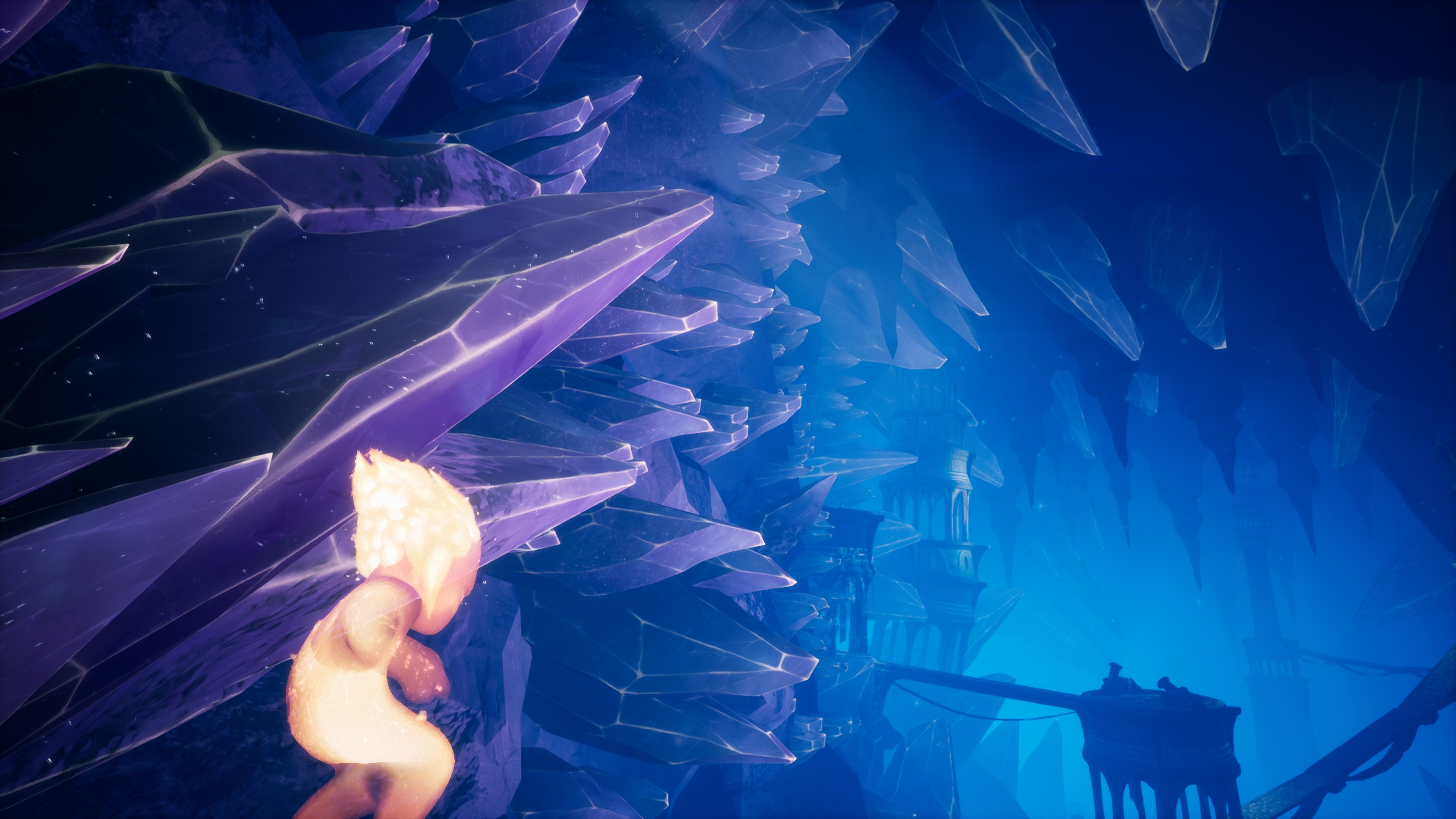
It becomes immediately apparent that Strayed Lights is simply beautiful. I mean "simply" both in that it's a simple matter to recognize Strayed Lights' beauty and that the beauty itself is simply rendered. It's not a photorealistic game, but it still paints a vivid, visceral world with broad swatches of blue, purple, and red. Strayed Lights begged me to take a picture of its stunning landscapes at every turn, which makes the inclusion of a pretty well-featured photo mode nice to see.
I don't have to say much about Strayed Lights' visuals — You can clearly see their grandeur in these screenshots. Embers successfully carved out a unique art design for itself and built a believable world within those frames. That's no easy task, but Strayed Lights is more than functional; it's memorable. I just wish the content of the world offered depth befitting the potential of those visuals.
This civilization is gone, and the people that remain are either unaware of its secrets or unwilling to share them with you.
The world of Strayed Lights is one of diverse environments and biomes, with one similar vein running through them all; the ruins of a decaying civilization nestle in the trees, the mountains, and the canyons, providing a constant reminder that the people of this world are suffering. The design of these ruins and the subtle clues hidden within them (sculptures, art, and architecture) hint at a civilization rich in history and culture, but you will see almost none of it. That civilization is gone, and the people left behind (of which you are a part) are either unaware of its fading secrets or unwilling to share them with you.
Underlying this all is a frankly incredible soundtrack composed by Austin Wintory, who has won many awards for their work on soundtracks in films and video games. Wintory, who has worked on various games and franchises like Monaco, Assassin's Creed, Abzǔ, The Banner Saga, Erica, and many more, composed an original score for Strayed Lights that perfectly and subtly captures the essence of the game and its visuals. It's a beautiful combination of sights and sounds, and it reminds me very distinctly of the Ori franchise, two of my favorite platformers of all time.
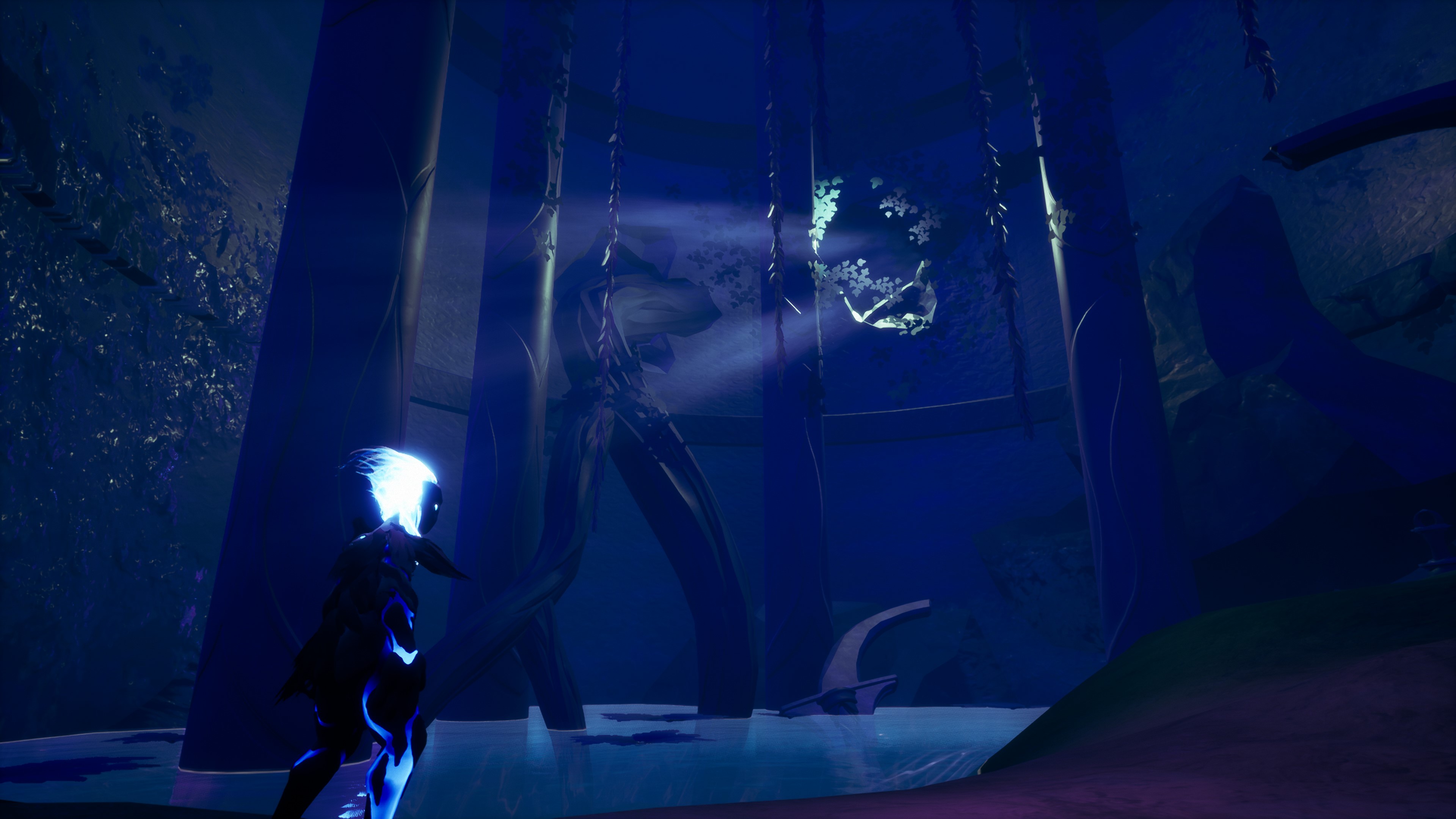
It may seem like a strange comparison. After all, the Ori games are 2.5D platformers, while Strayed Lights is a 3D action game. Still, I had a constant sensation in the back of my head that I had felt only twice before — When playing Ori and the Blind Forest and when playing Ori and the Will of the Wisps. Moon Studios' award-winning franchise touched millions of hearts with its stunning, masterful blend of breathtaking visuals, nuanced world design, beautiful and emotional music, and surprisingly tricky gameplay. Strayed Lights has all of these elements, maybe in a less evolved form, but they're there, and they shine bright.
Haven't played Ori? You're missing out, so please do that and then immediately play Strayed Lights. You can read our Ori and the Will of the Wisps review for more information. You can also check out our interview with Gareth Coker, the composer behind the Halo Infinite and Ori soundtracks, to get a glimpse at the passion and consideration that goes into crafting a timeless soundtrack. Coker has long been one of my favorite video game composers, but I may now have to add Wintory to that list.
A story that's crafted by you
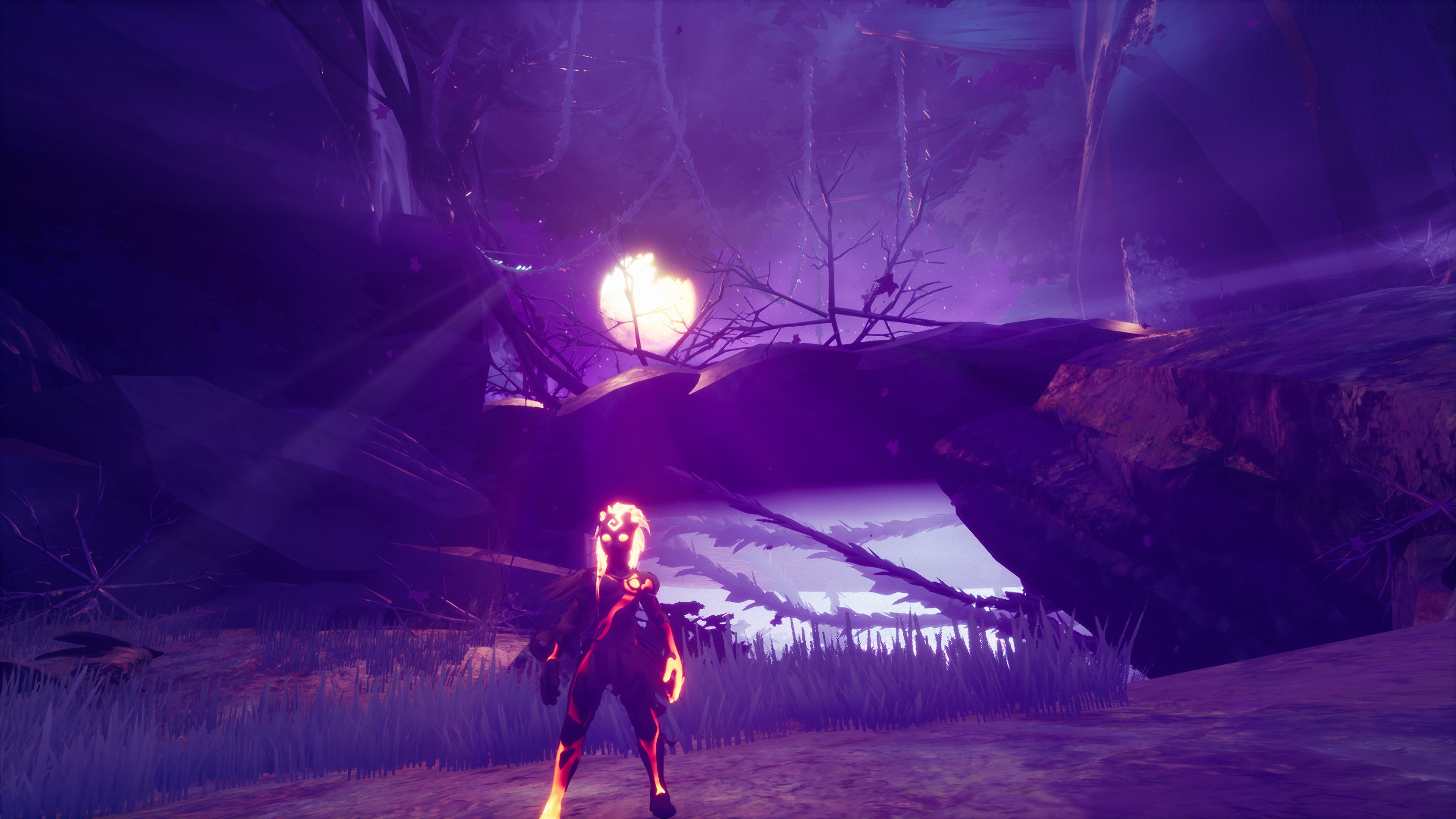
Strayed Lights does not hasten you forward with urgency and a barrage of quests; it does not tightly grip your hand and excitedly tell you all the points of interest that can occupy your time and give you a sense of accomplishment. Progressing in Strayed Lights is driven primarily by your own curiosity. The world design is largely linear and relies on you wanting to move forward, to explore the next area, investigate an abnormality in the world or an interesting light, to try to learn more about the enigmatic world surrounding you.
This will deter some players, and that's fine — the narrative of Strayed Lights also embraces this philosophy. There is not a single word, spoken or written, in the entirety of this game. The story exists, but it is vague, powered not just by the sights and sounds of Strayed Lights but by your own interpretation of its messages. Strayed Lights has a story, but it feels more like a journey than it does a narrative; while every journey through Strayed Lights will look similar, what you gain from that journey may not be.
To me, Strayed Lights is about emotions. It's about the power our emotions can have over us and the reality that surrounds us; it's about the paradox between our emotions controlling us and the simple truth that we are never our emotions. During your journey in Strayed Lights, you will grow from infancy to adulthood, you will learn power and how to use it to influence the world, and you will challenge your own inner demons while battling the corruption infecting your home and family.
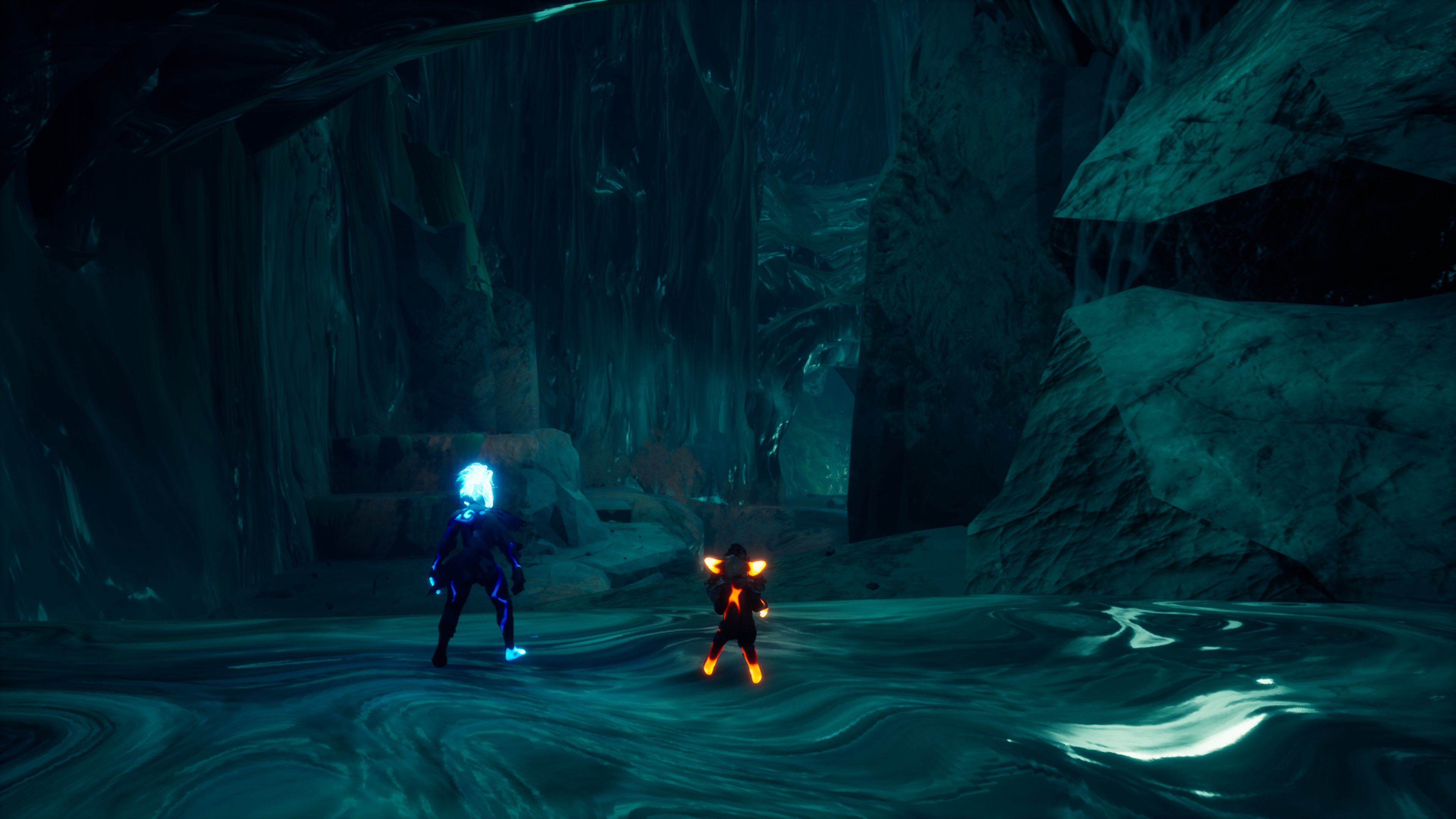
Yes, you are not alone. The ruined civilization that surrounds you is still home to the remnants of its people, and they are all your family. Most of your siblings will be living a quiet existence, acknowledging you only in passing. Still, you'll encounter siblings that have been overwhelmed by their emotions and corrupted by the strange energy infecting the land. It's up to you to overcome the power of their darkest feelings and soothe their troubled hearts by helping them find acceptance, knowledge, or strength. These siblings are the "bosses" of Strayed Lights, and each one is unique in its design, the challenges they present to you, and the feelings they represent.
To take anything away from Strayed Lights, you have to be willing to fill in the blanks yourself.
One sibling will be overcome with fear, and you must help them confront that fear and become stronger for it. Another is enthralled in a blind rage, and you must calm them and help them see the folly of their tantrum. Another still will have embraced curiosity to the point of reckless abandon, hurting others in their quest to learn and see and play, and you must guide them to a gentler, more considerate touch. Later, you'll encounter siblings captured by more complex emotions, like one who feels stuck in their ways; they feel as if they've lost control over their lives and, despite their best intentions, seem to hurt those only trying to help them. You must help them accept and move on. Finally, the last sibling was the most terrifying and beautiful to me. They have wrapped themselves in the comfort of illusion, a cruel dream that aids them in escaping the desolate reality that surrounds them. You must break those illusions and show them that there is beauty to be found in the real world, still.
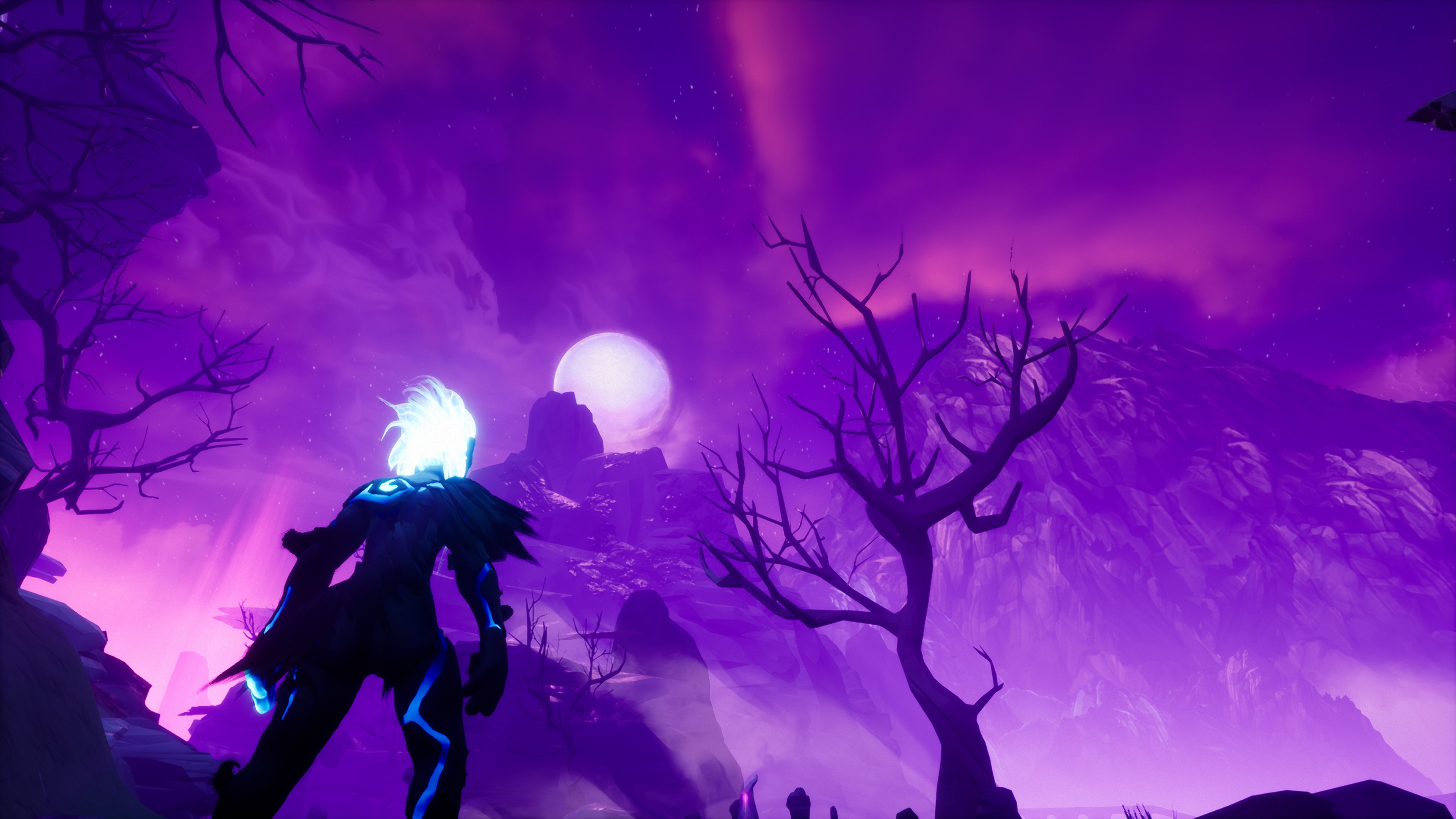
This theme of emotional maturity and self-discovery extends beyond the ambiguous narrative, as well. All of your siblings possess the ability to manifest their emotions as a physical color, either blue or orange, with the former representing "down" emotions and the latter "up" emotions. No, I do not mean "negative" and "positive" emotions, as that is not the same thing. Blue siblings may feel introspective, pensive, or calm just as much as they might feel somber, depressed, or afraid. Red siblings may be feeling happy, confident, or curious just as much as they might be feeling angry or hurt.
I could also argue that the enemies you encounter throughout Strayed Lights are fractured, wayward fragments of negative emotions cast off from you or the sibling you seek to soothe. I do know that defeating these enemies or successfully soothing siblings comes with a powerful white light that represents peace and acceptance for me. During your journey, you will attempt to bring that peace to everyone you touch; you will discover and learn about these emotions as you grow, and you will elevate the entirety of your people through your actions. In the end, though, even after you've soothed every strayed light in the land, you'll still have to confront the most frightening and powerful demon of them all: yourself.
This is my interpretation of Strayed Lights, but you may not feel the same after playing it. Everything in Strayed Lights is portrayed through visuals, music, and actions, and there is no clear-cut narrative; everyone will take something different away from their experiences. To take anything at all, you have to be willing to fill in the blanks left by the developers yourself. For me, Strayed Lights was a powerful and enriching game that constantly struck me with its sheer beauty. But how is it as a game?
A simple game, but one worth playing
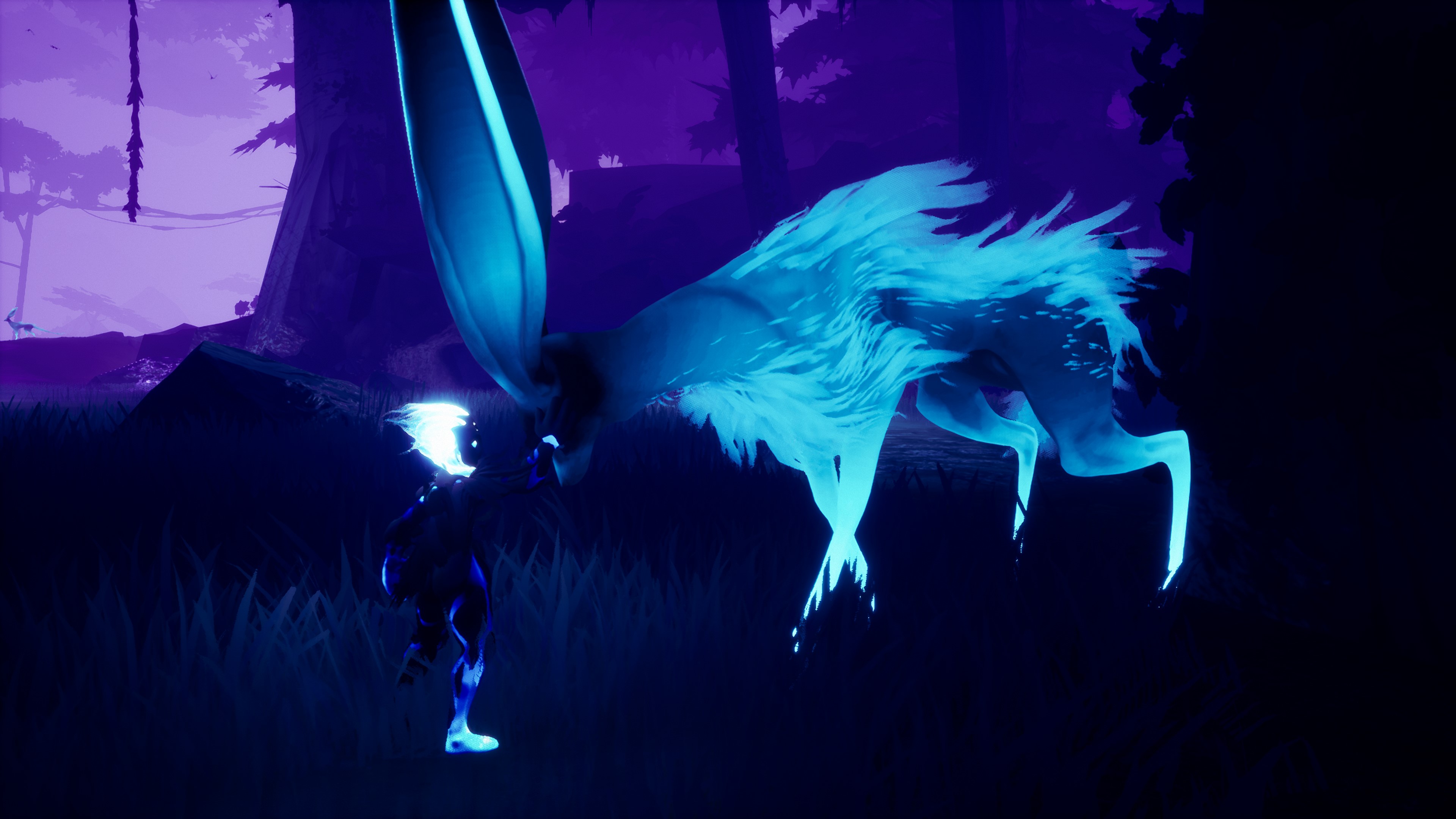
I can hardly write so many words on a game without discussing how it, you know, plays, so let's end on that note. Strayed Lights is a 3D action game; most of its gameplay is centered around its unique combat system, but there are very light exploration, platforming, and player upgrade mechanics sprinkled along the edges.
The world of Strayed Lights is sprinkled with strange, golem-like creatures possessed of corrupted energy and malicious intent, and you'll have to destroy these monsters to reach the siblings you need to help. The basis of combat is simple: the key to success is not to attack but to defend with parries and counters. Everything, including you, can change between blue and orange colors. Enemies can also change to purple.
The key to success is not to aggressively attack, but to patiently defend.
In order to parry with the right bumper, you'll need to match your color to your enemy with the left bumper. Parrying with good time when your color matches build up your energy levels and restores your health, while parrying when your color is different will give you less energy and no health. Purple, corrupted attacks cannot be blocked and have to be dodged. You do have an attack that builds up your energy, but parries are far more effective.
You don't win by destroying your opponent with brute force; instead, you sap their energy via your parries and counters until you're able to dissolve their corrupted energy and absorb the cores of light into yourself. Every sibling or boss you have to soothe follows these basic rules but with a far wider range of attacks and attack patterns, more health, and often multiple stages.
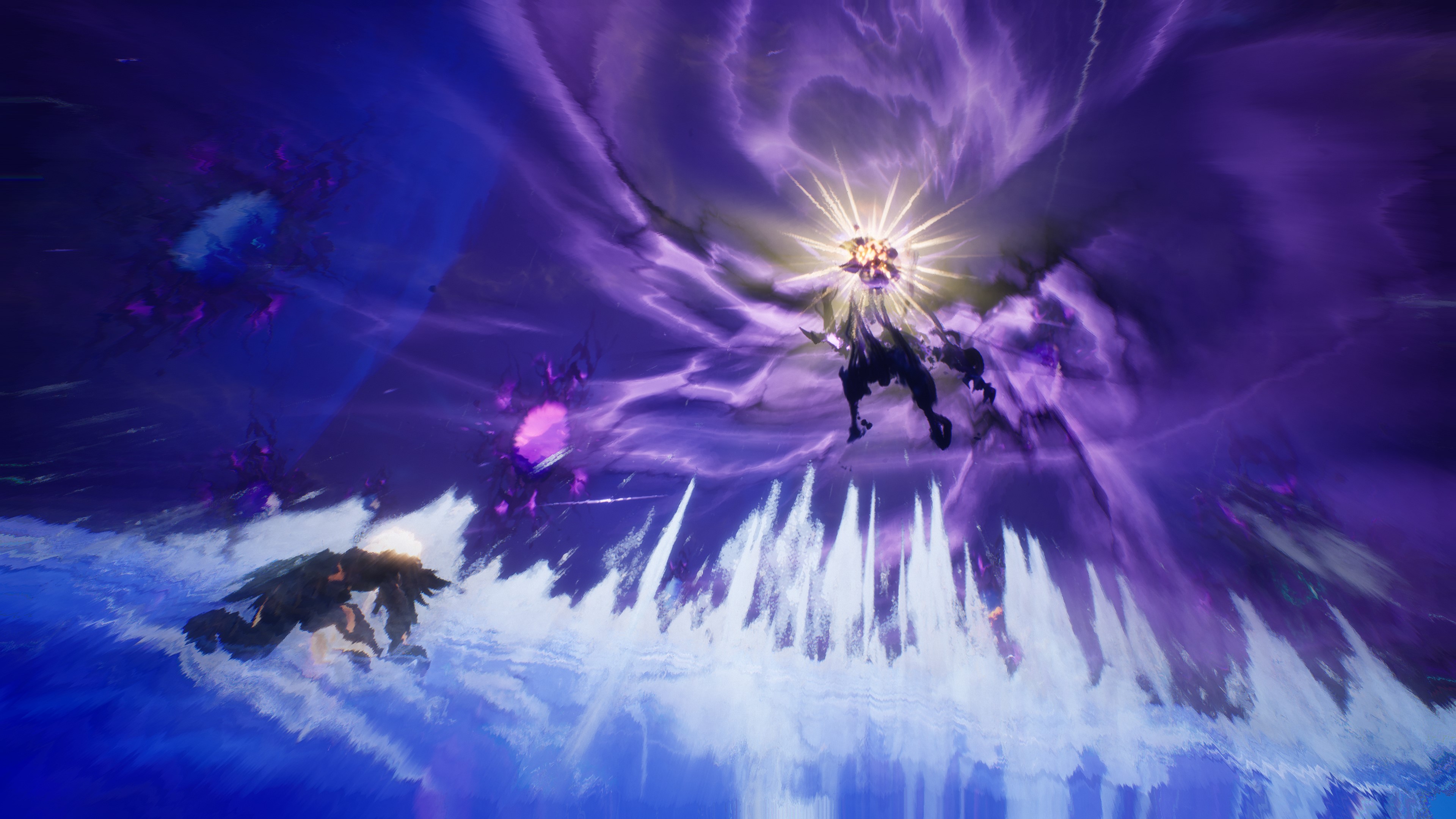
Outside of combat, you can explore the world to find orbs that increase the amount of energy you collect from attacks and parries. You can also use the cores you collect from defeated enemies to upgrade your passive skills, while successfully soothing siblings will give you valuable ability points to unlock or upgrade the Balance (parry without changing colors for a short time), Stun (paralyze enemies in the area for a short duration), and Blast (absorb a large amount of energy from your enemy) abilities. These skills and abilities don't play a massive role in the game but gently augment the foundation of combat.
Strayed Lights is a simple game, almost disappointingly so. It only takes 5-6 hours to complete the entire game. At the same time, the combat is surprisingly challenging (but never to the point of impossibility) and addictive. The surrounding gameplay elements don't do enough to add depth to the formula. I just wish there was more. More to see, more to do, and more to learn about this world. There's something beautiful about a game that relies on its players to complete its vision, but Strayed Lights sometimes feels like it has wandered too far in that direction.
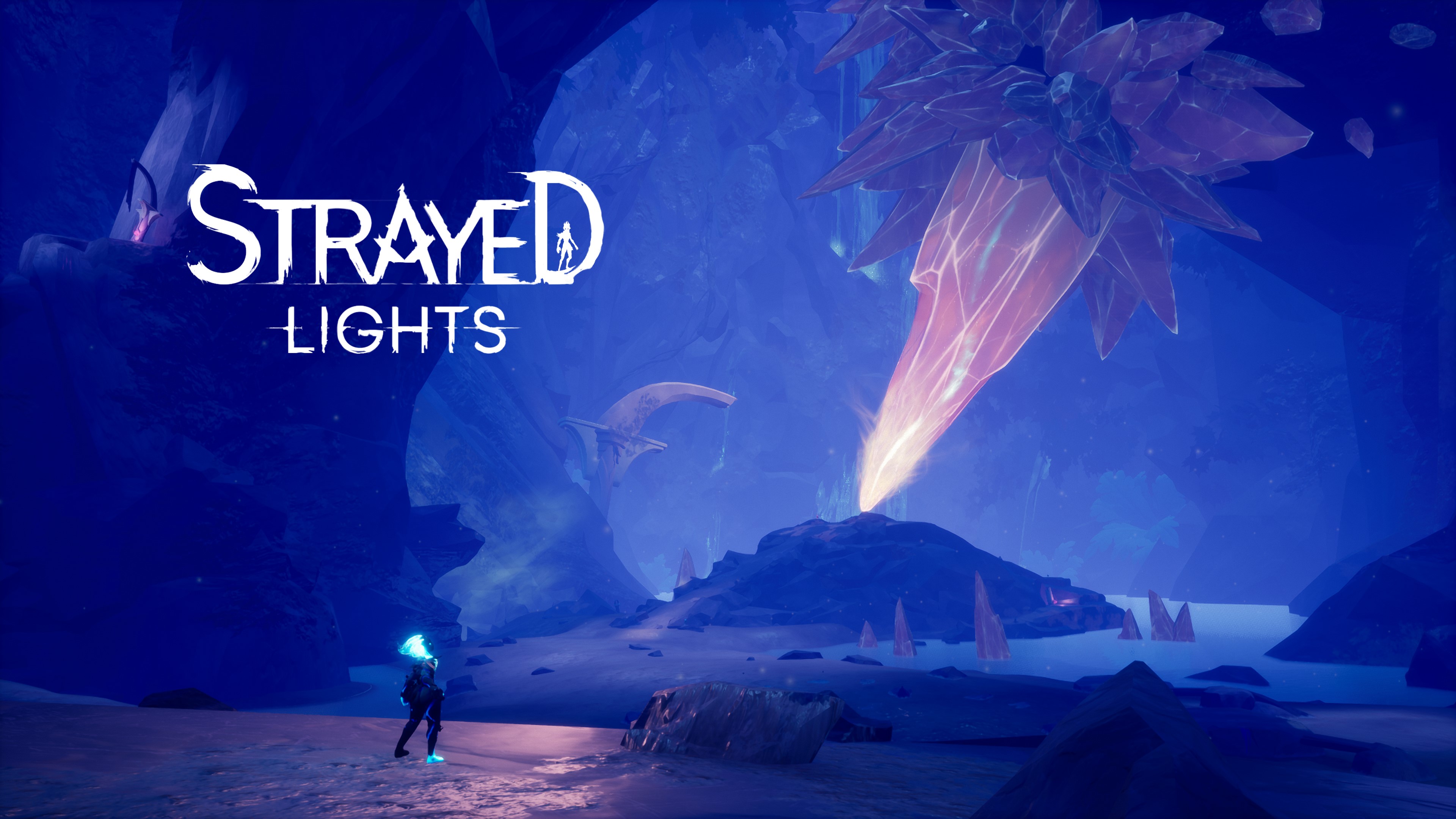
Embers has crafted a creative, emotional, gorgeous, and generally fun indie game with its first project, and I'm very happy that I gave it a chance. Strayed Lights is the kind of game that would usually pass me by because it's not a massive or wildly ambitious project, it's not a part of the best Xbox Game Pass games, and it's releasing alongside a lot of other highly anticipated games like Star Wars Jedi: Survivor and The Last Case of Benedict Fox.
Strayed Lights isn't perfect; it lacks depth in the lore of its world and breadth in its gameplay. Still, playing Strayed Lights was a very moving experience for me, with its visuals, music, and symbolism enrapturing me during the entirety of my 5 1/2-hour playthrough. It was more than worth the time I invested into it, and it has made me extremely excited to see what Embers brings into the world next. I hope it's an expanded sequel to Strayed Lights.
Strayed Lights is now available on Xbox Series X|S, Xbox One, Windows PC (via the Microsoft Store, Steam, GOG, and the Epic Games Store), PlayStation, and Nintendo Switch. It retails for $24.99 and has a Deluxe Edition on some platforms for $29.99, including the digital soundtrack and a digital artbook. Strayed Lights is not available via Xbox Game Pass or Xbox Cloud Gaming.







